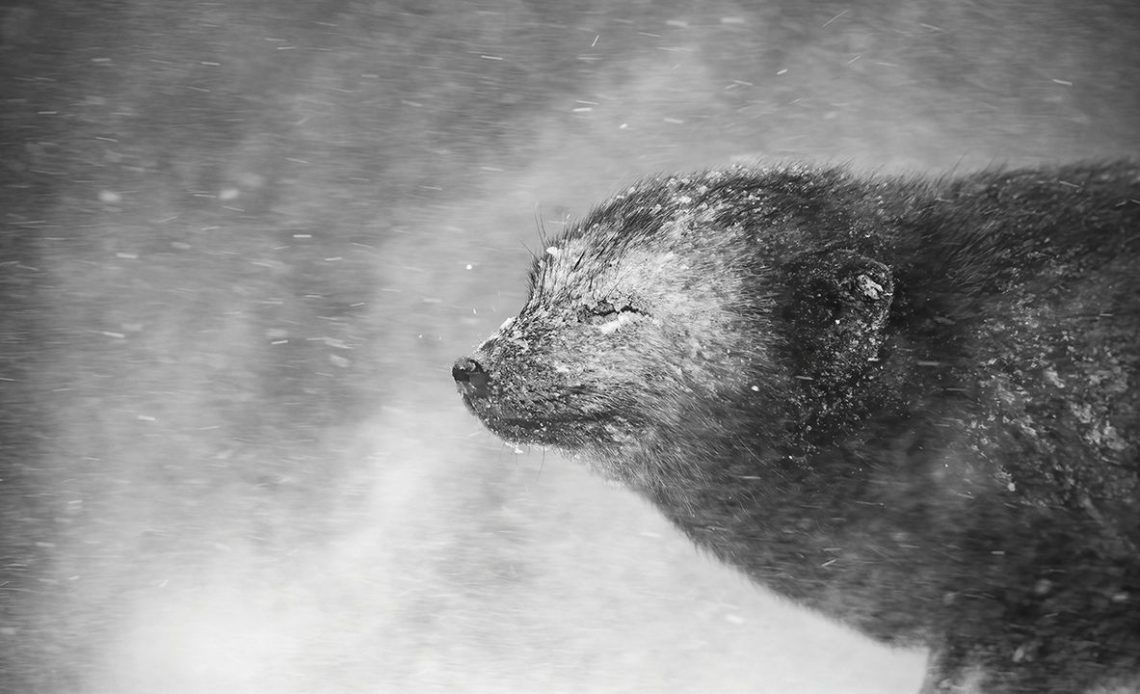
We explore the journey of a seasoned wildlife photographer and what it really takes to break into the industry. This time, we caught up with David Gibbon – working with Canon and Sigma gear – to hear how he carved out a name for himself behind the lens.

Specialisms: Wildlife, extreme locations, workshop leader. See more of David’s work on his website or Instagram account.
David has been a wildlife photographer since 2009 and began running wildlife photography tours in 2018. He has been highly commended in the Nature Photographer of the Year awards for his Arctic fox images. David went on countless expeditions. In 2023, for example, he went to Ellesmere Island, Canada, in search of the white Arctic wolf, polar bears, and musk ox.
Let’s dive into David’s journey – from the early days of his career to the harsh realities of wildlife expeditions – and explore the trusted gear he relies on every day in some of the planet’s toughest shooting conditions.
Career Path

When did you start out in your current photographic genre?
In 2009, I visited a local RSPB reserve. I’ve always had a passion for the natural world, but watching people at the reserve photographing wildlife made me want to become a wildlife photographer.
I bought a camera and have upgraded to better gear over the years while following the work of many professional wildlife photographers. Many of them, such as Kevin Morgans, Ben Hall, Neil McIntyre and Andy Parkinson, are now friends.
What challenges did you face as a startup, and how did you overcome them?
In 2017, I began to research how to start up my own wildlife photography tours. I visited Iceland, met up with people who I could work with and, in 2018, ran my first winter Arctic fox trip. I faced many challenges, such as obtaining the relevant insurance for running tours, working out the logistics for such a trip, plus looking at places where clients would sleep, how I would keep them safe, and catering to certain dietary requirements.
There is a lot to think about, but with the help of my friends in Iceland, this trip has become a great success, selling out year after year.

What key skills are needed for your line of work?
Running tours takes a lot of skills, more than many people may realise. You need good photography skills first and foremost, but you also need to be good at planning and organisation to make sure everything runs smoothly with dates and with the people you work with on the ground. You also need to make sure food, accommodation and transport are all in place for when clients arrive. Problem-solving is essential; if an unexpected issue arises, you need to deal with it quickly and professionally.
Business skills are critical too – making sure costs on the tour do not outweigh income so you make some kind of profit. You need to keep a check on deposits, what people owe you and who hasn’t paid.

I am developing ideas all the time for new tours, and plan to expand. For example, I ran two trips for Arctic fox in Iceland – one to Kviar, which is an adventure, and one to Hornvik, which is more of a true expedition.
I am also ran a trip to photograph snow leopards and Pallas cats in Mongolia last January, and this summer I teamed up with award-winning photographer Kevin Morgans. Together, we are running a trip to photograph puffins and Arctic birds on Grimsey Island in Iceland.
David’s photo kit
Canon EOS R3

“This is the best camera I’ve ever used – I love it. It’s expensive, but the image quality, autofocus and tracking are mind‑blowing.”
Canon EF 500mm f/4L IS II USM

“This is still my favourite lens: I take it almost everywhere with me when photographing wildlife. The image quality is pin-sharp.”
Sigma 150-600mm F/5-6.3 DG DN OS Sports

“This is a stunning and underrated lens. I take it on all my Iceland trips – image quality is first-class.”
Sigma 14-24mm f/2.8 DG DN Art

“When I want to photograph the night sky or capture a wide-angle wildlife image with a camera trap or wireless remote, this is the lens I reach for.”

Author: Peter Fenech
Source: DigitalCameraWorld
Reviewed By: Editorial Team



